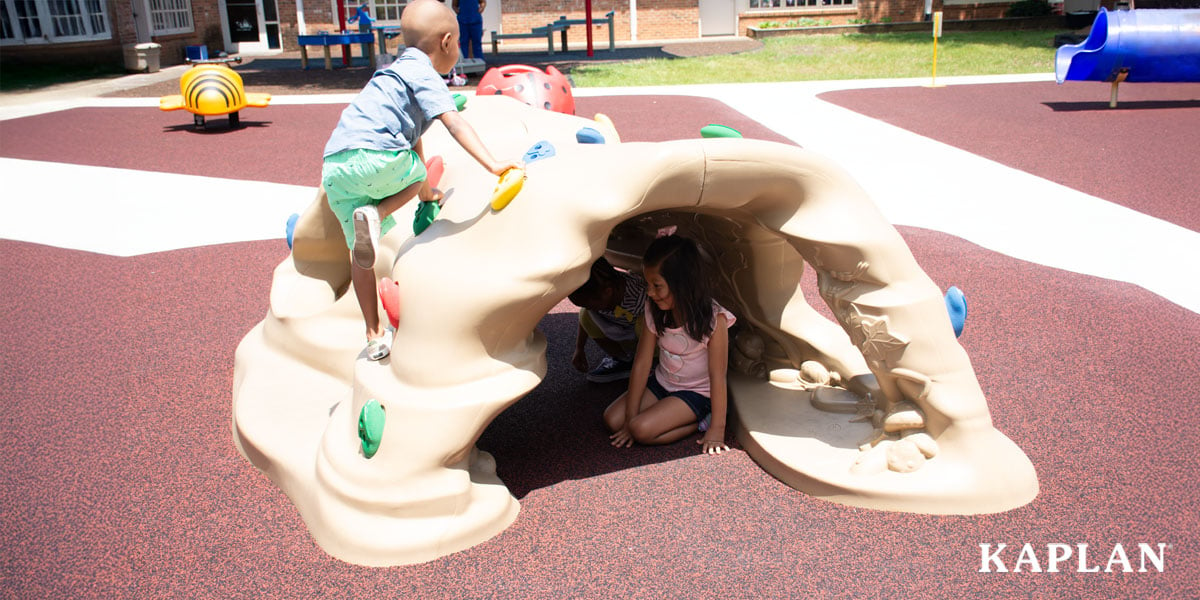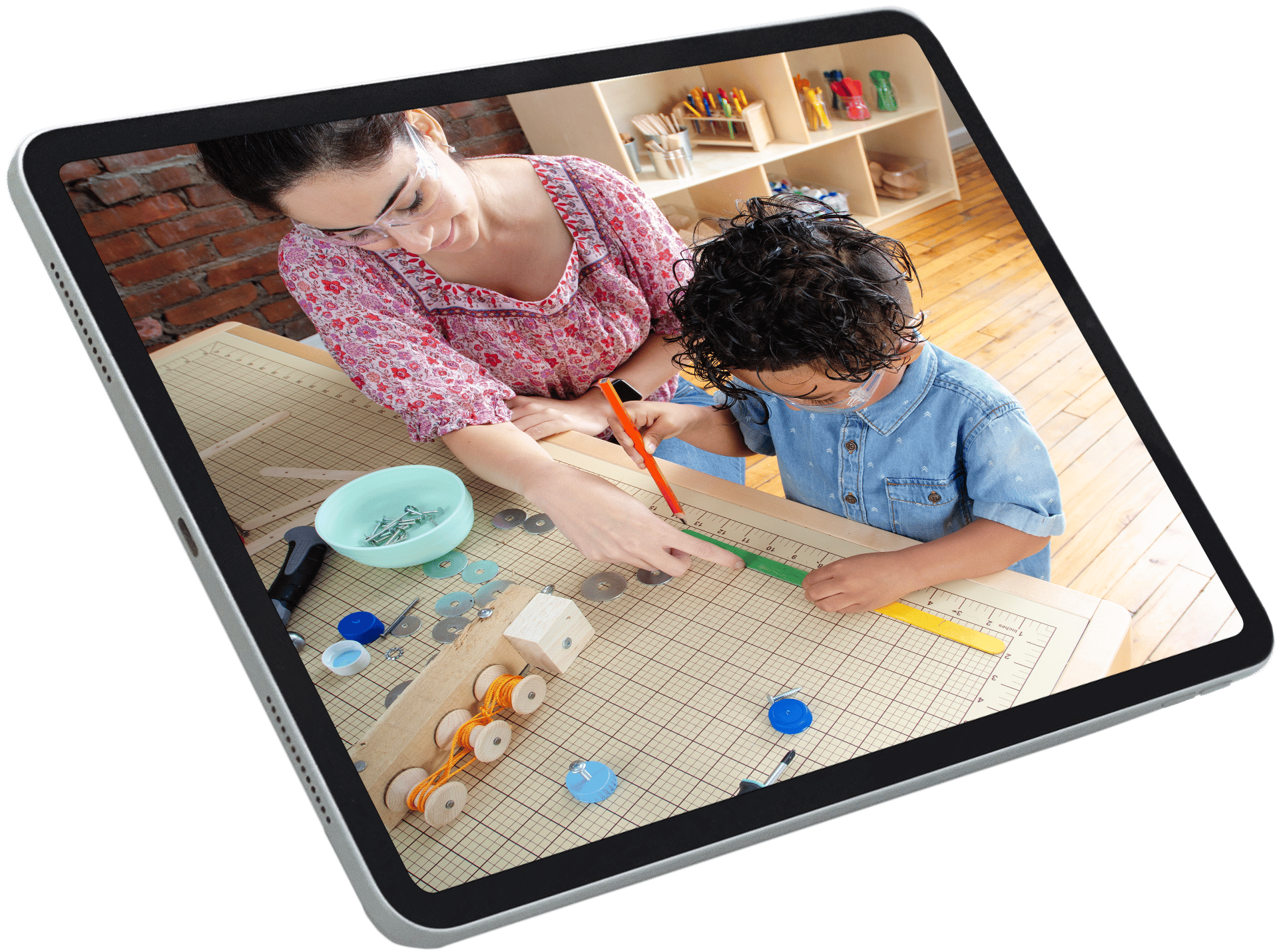Playground surfacing does more than provide a soft place to run and play; it is also a crucial part of keeping outdoor environments safe and inviting. Just like the equipment it surrounds, your surfacing is a long-term investment that should stand up to years of active play and changing weather.
Poured-in-place (PIP) rubber is a popular surfacing choice for many playgrounds because of its durability, low-maintenance design, and endless color and pattern options. Its two-layered system provides seamless, accessible surfacing that supports safe, inclusive play.
While poured-in-place rubber can last as long as 15 years, it still experiences wear and tear over time from children at play, UV exposure, and seasonal shifts. The good news? We are here to help. Our playground sales representatives are happy to provide one-on-one assistance for your unique surfacing needs. We can also offer a few simple maintenance steps that will protect your investment and extend the life of your poured-in-place rubber playground surfacing.
In this article, we’ll share 5 practices—sweeping, weeding, rinsing, cleaning, and cushioning—that will ensure your poured-in-place rubber playground surfacing stays strong, safe, and ready for play, year after year.

How do I care for poured-in-place rubber on my playground?
Poured-in-place rubber is a two-layer surface with a bottom layer of solid rubber and a top layer of rubber granules. It can last anywhere from 10-15 years, and it does not require heavy maintenance because it is one of our most durable surfacing options. Still, there are a few simple practices you can implement to keep your poured-in-place rubber in premium shape for years to come.
Sweeping (or blowing)
Sweeping at least once a month will help keep the rubber clean and free of debris such as dirt, leaves, and sticks. Removing this kind of debris from the playground will reduce safety risks and prevent debris from scraping, puncturing, or tearing the rubber’s top layer. (Scrapes, punctures, and tears are important to avoid because they decrease the rubber’s ability to soften falls.) To sweep pour-in-place surfacing, use a regular broom—or even a leaf blower if you want to save time!
Weeding
Weeds tend to come up around the outer edges of poured-in-place rubber. In addition to damaging the aesthetics of your playground, weeds can attract unwanted pests such as ants and mosquitoes that may cause harm to children. During routine lawn maintenance, clear all weeds that are within 6 inches of the surface’s edge. It is okay to use a weed eater if you’re careful, but do not use a lawnmower because you will cause significant damage to the rubber if you run the lawnmower over it.
Rinsing
Rain will wash away a lot of loose debris (leaves, sticks, etc.) and get rid of mild-to-moderate stains. Still, it is good to regularly rinse poured-in-place rubber to keep it free of contaminants. We recommend rinsing poured-in-place rubber once per month with a garden hose on a low-pressure setting. If you don’t have a garden hose, a mop and bucket will do the trick. Do not use a pressure washer or high-pressure garden hose setting because these can wear down the rubber’s top layer and reduce its shock absorption.
Cleaning stains
Scrub stains with a mixture of warm water and child-safe dish soap. For more serious stains, apply a mixture of water and white vinegar to the affected area, and let it sit for 10-15 minutes. Then, gently scrub the stain with a soft-bristle cleaning brush or disposable rag and rinse the area with clean water. Do not scrub too hard; if you do, you may damage the rubber.
Cushioning
Heavy accessories such as tables or benches can puncture the surface of your poured-in-place surfacing. If you’re going to add these accessories to areas that have poured-in-place rubber, put something solid underneath—like a piece of plywood—to distribute the weight more evenly.
Want to learn more about playground maintenance?
You now have everything you need to keep your poured-in-place rubber at its best. If you want to know more about surfacing maintenance or playground maintenance in general, check out this article on our Learning Center for a comprehensive guide to keeping your playground as safe as possible for as long as possible. 

